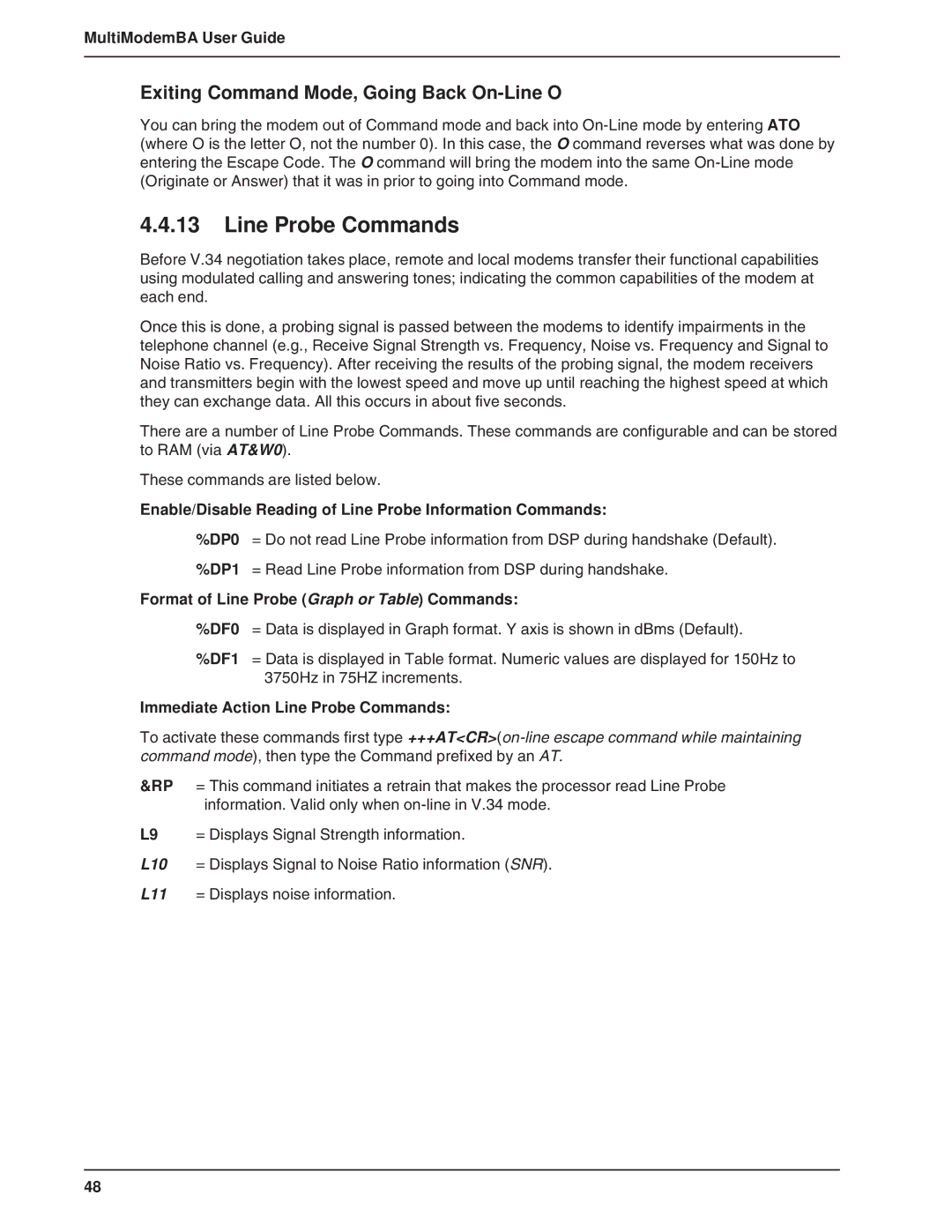
MultiModemBA User Guide
Exiting Command Mode, Going Back On-Line O
You can bring the modem out of Command mode and back into
4.4.13Line Probe Commands
Before V.34 negotiation takes place, remote and local modems transfer their functional capabilities using modulated calling and answering tones; indicating the common capabilities of the modem at each end.
Once this is done, a probing signal is passed between the modems to identify impairments in the telephone channel (e.g., Receive Signal Strength vs. Frequency, Noise vs. Frequency and Signal to Noise Ratio vs. Frequency). After receiving the results of the probing signal, the modem receivers and transmitters begin with the lowest speed and move up until reaching the highest speed at which they can exchange data. All this occurs in about five seconds.
There are a number of Line Probe Commands. These commands are configurable and can be stored to RAM (via AT&W0).
These commands are listed below.
Enable/Disable Reading of Line Probe Information Commands:
%DP0 = Do not read Line Probe information from DSP during handshake (Default). %DP1 = Read Line Probe information from DSP during handshake.
Format of Line Probe (Graph or Table) Commands:
%DF0 = Data is displayed in Graph format. Y axis is shown in dBms (Default).
%DF1 = Data is displayed in Table format. Numeric values are displayed for 150Hz to 3750Hz in 75HZ increments.
Immediate Action Line Probe Commands:
To activate these commands first type
&RP = This command initiates a retrain that makes the processor read Line Probe information. Valid only when
L9 = Displays Signal Strength information.
L10 = Displays Signal to Noise Ratio information (SNR).
L11 = Displays noise information.
48
